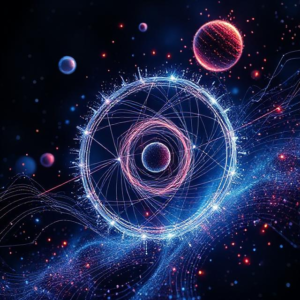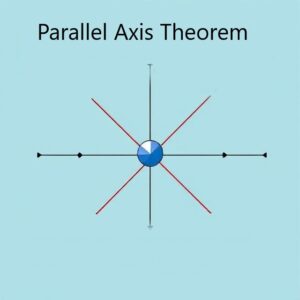- Newton’s Laws of Motion
First Law (Law of Inertia):
Formula:
Explanation: An object will stay at rest or in uniform motion unless acted upon by a force.
Second Law (Force and Acceleration):
Formula:
Explanation: The force on an object is equal to its mass times its acceleration.
Third Law (Action and Reaction):
Formula:
Explanation: For every action, there is an equal and opposite reaction.

- Work, Energy, and Power
Work Done by a Force:
Formula:
Explanation: Work is done when a force acts over a distance.
is the force,
is the distance, and
is the angle between the force and the direction of motion.
Kinetic Energy:
Formula:
Explanation: The energy an object has due to its motion, where
is mass and
is velocity.
Potential Energy:
Formula:
Explanation: The energy stored in an object due to its height above the ground, where
is mass,
is acceleration due to gravity, and
is height.
Power:
Formula:
Explanation: Power is the rate at which work is done, where
is work and
is time.
- Motion Equations (Kinematics)
Equation 1 (Displacement with constant acceleration):
Formula:
Explanation: Final velocity
is initial velocity
, plus acceleration
times time
.
Equation 2 (Displacement without final velocity):
Formula:
Explanation: Displacement
is initial velocity
times time
, plus half the acceleration
times time squared.
Equation 3 (Displacement with velocity):
Formula:
Explanation: Displacement
is the average of initial velocity
and final velocity
, times time
.
- Circular Motion
Centripetal Force:
Formula:
Explanation: The force that keeps an object moving in a circle, where
is mass,
is velocity, and
is the radius of the circle.
Centripetal Acceleration:
Formula:
Explanation: The acceleration that keeps an object moving in a circle.
- Gravitation
Gravitational Force (Newton’s Law of Universal Gravitation):
Formula:
Explanation: The force between two masses
and
, separated by distance
, where
is the gravitational constant.
Gravitational Potential Energy:
Formula:
Explanation: The energy stored due to gravitational attraction between two masses.
- Waves and Sound
Wave Speed:
Formula:
Explanation: The speed
of a wave is the frequency
times the wavelength
.
Sound Intensity:
Formula:
Explanation: The intensity
of sound is the power
divided by the area
through which the sound passes.
- Thermodynamics
First Law of Thermodynamics (Energy Conservation):
Formula:
Explanation: The change in internal energy
of a system is equal to heat added
minus work done
by the system.
Heat Transfer:
Formula:
Explanation: The heat
needed to change the temperature of a substance is its mass
times its specific heat
times the change in temperature
.
- Electricity and Magnetism
Ohm’s Law:
Formula:
Explanation: Voltage
is current
times resistance
.
Coulomb’s Law (Electric Force):
Formula:
Explanation: The force between two charges
and
, separated by distance
, where
is Coulomb’s constant.
Electric Power:
Formula:
Explanation: The power
in an electrical circuit is the product of current
and voltage
.
- Optics
Lens Equation:
Formula:
Explanation: The inverse of the focal length
of a lens is the sum of the inverses of the object distance
and the image distance
.
Magnification:
Formula:
Explanation: Magnification
is the ratio of image height
to object height
, or the ratio of image distance
to object distance
.
- Modern Physics
Einstein’s Mass-Energy Equation:
Formula:
Explanation: Energy
is equal to mass
times the speed of light
squared.
Photoelectric Effect (Energy of Photon):
Formula:
Explanation: The energy
of a photon is the frequency
times Planck’s constant
.











